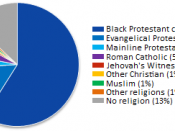QUESTIONS FROM INSTRUCTOR:. Many historians cite the 1920s as the decade in which America entered the "modern era." Given the myriad labels attached to this decade, this essay focuses on the broader context of all those movements under the umbrella term "modernism."
First, what is modernism and why did it apply to the 1920s (as opposed to earlier decades)? What ideologies or beliefs had changed by the 1920s that qualified this decade as "modern" for America?
Second, to expand on those changes, what new issues/events/movements did Americans face in the 1920s? Discuss at least three examples and explain how each reflected modernism.
Last, in what ways did Americans respond to modernism? Why did some embrace modernism and others reject it? Discuss at least three examples and explain its significance for 20th century American life.
MY RESPONSE:
Intro/First.
World War I made the United States a world power. While European nations tried to recover from the war, the United States had overseas territories, access to markets, and plenty raw materials.
Formerly in debt to European investors, the United States began to lend money abroad. At home, the economy expanded. Characteristics that qualified the 1920s as New Age and modern were assembly-line production, mass consumption, easy credit, and advertising. In addition, profits soared, and American passion for reform decrease, while business and government resumed their long-term attraction. But not all Americans enjoyed the rewards of prosperity. A mix of economic change, political conservatism, and cultural conflict made the 1920s a decade of contradictions.
Second.
By 1922 the nation began a spectacular spurt of growth. The first new issue and event that Americans encountered in the 1920s was auto production, which symbolized the new potential of industry. Annual car sales tripled from 1916 to 1929; and 27 million cars were quickly sold by...


